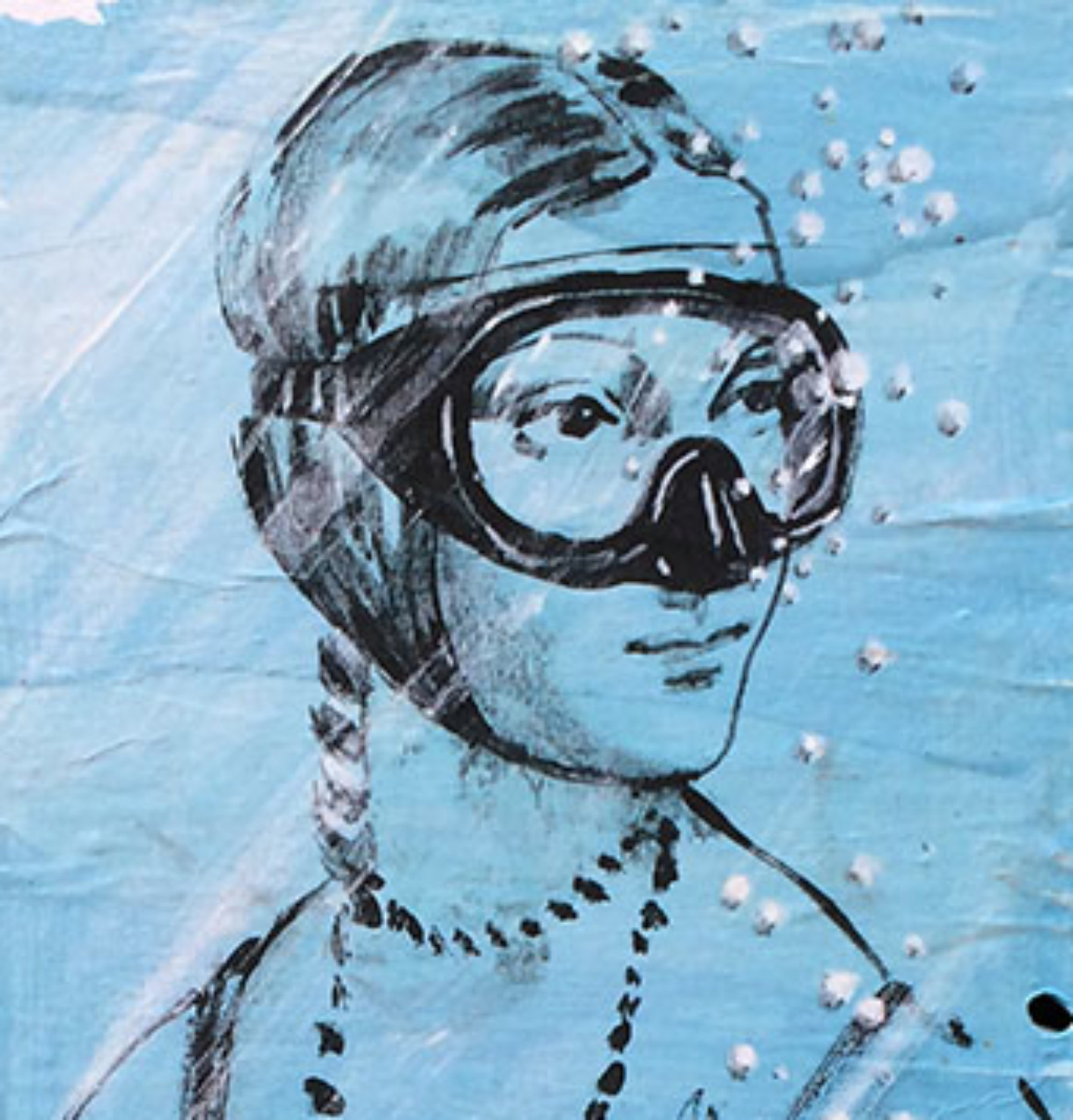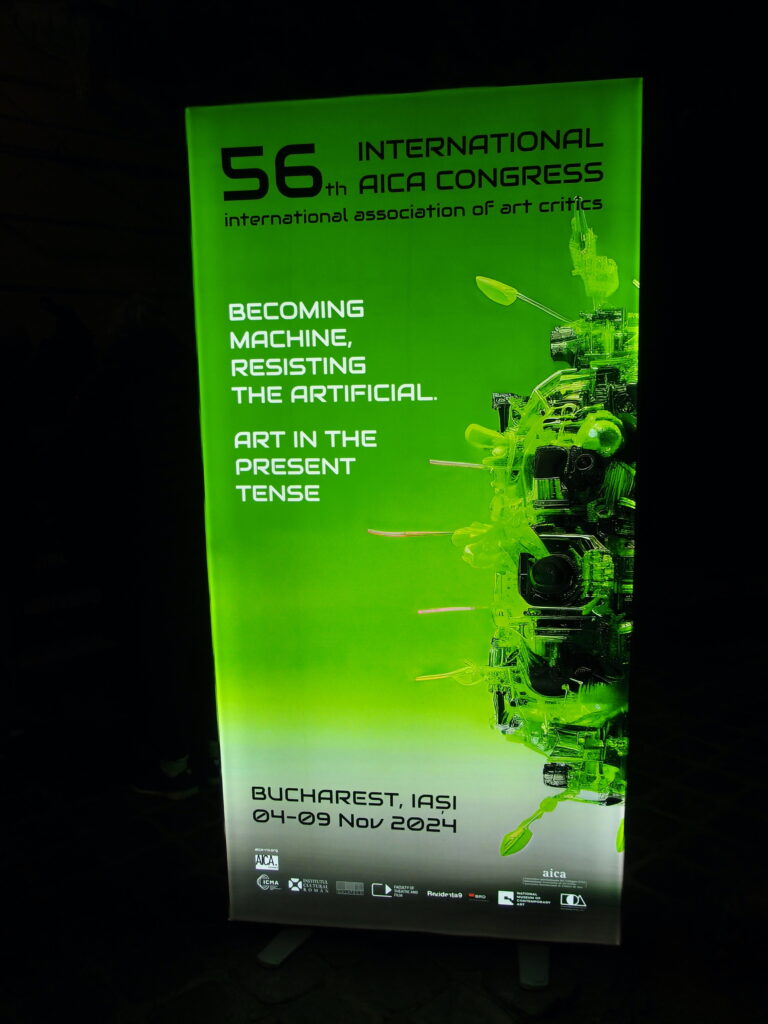
Congressposter
Participating from Sweden: Christian Chambert, board member and honorary member of AICA International; interim member of AICA’s Congress Committee until 2024.
The theme of the annual AICA Congress in 2024, the 56th to date, was highly current and controversial. Recent changes in the digital world were commented from a variety of artistic, theoretical and social perspectives. Three packed days in Bucharest were followed by two days (including travel) in Iaşi. Throughout the week, we made stimulating visits to several exhibitions. According to the ambitious programme, there were some fifty lectures, which is more than usual. The lecturers came from twenty or so countries, mainly European. Information was distributed rather late, which is partly why only some eighty of the organisation’s more than 5,000 members attended.
The Congress First Part: MNAC in Bucharest
The Congress took place at the National Museum of Contemporary Art in Bucharest (MNAC) and the “George Enescu” National University of Arts in Iași. The theme was Becoming Machine, Resisting the Artificial. Art in the Present Tense. The programme is available on AICA International’s website. The Congress was hosted by AICA Romania under the directorship of its chairman Horea Avram and his team.
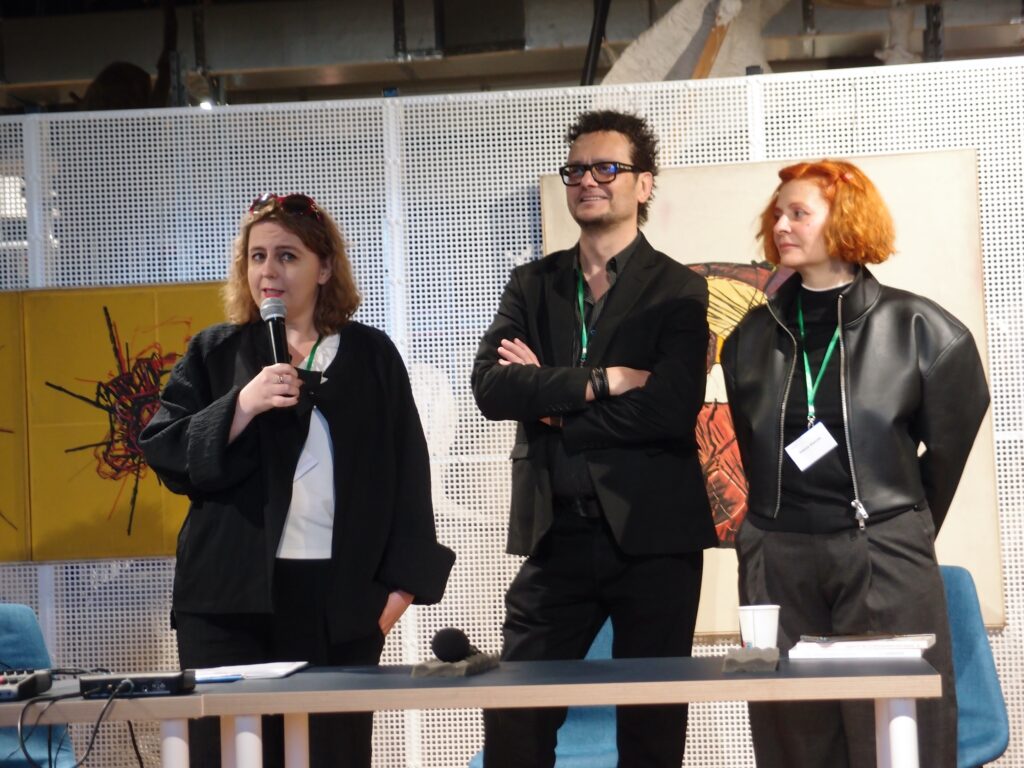
Małgorzata Kaźmierczak, AICA President, Horea Avram, President AICA Romania and Raluca Oancea, member of the organizing committee. Photo from MNAC in Bucharest
The MNAC is located in the Parliamentary Palace commissioned by the former president Nicolae Ceaușescu. It was designed in a late-neoclassical style and was almost completed in 1997. It is one of the world’s largest administrative buildings. The palace with its sumptuous halls was built in a period when poverty and food shortages were part of everyday life for many Romanians.
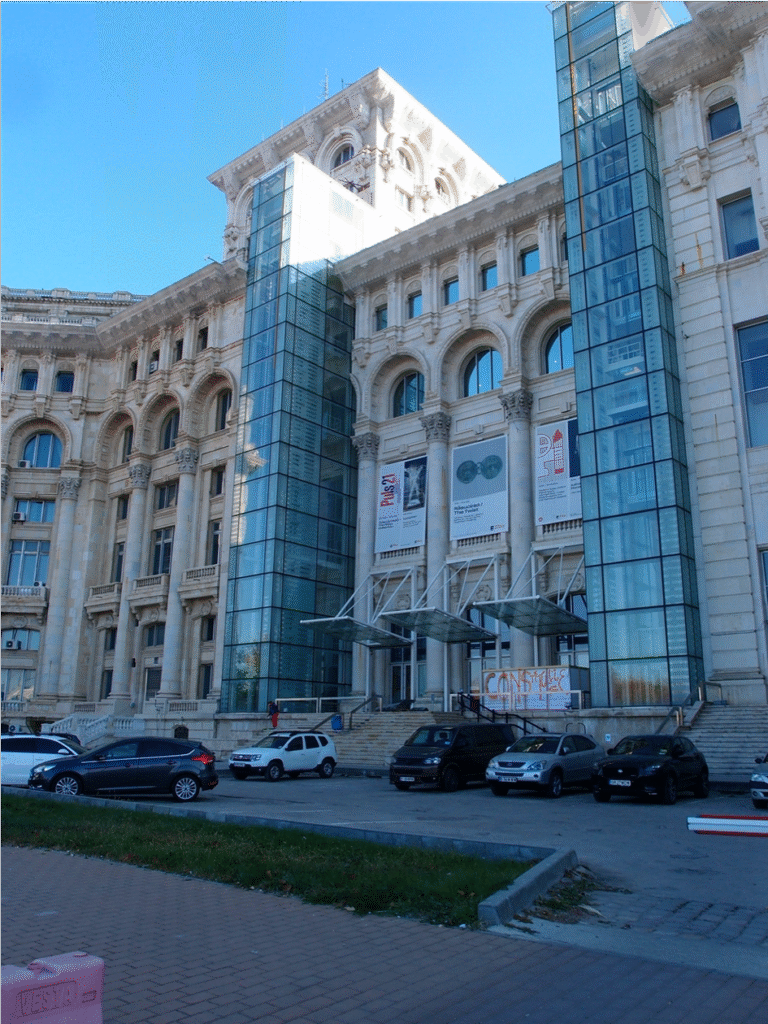
The Palace of Parliament in Bucharest with two external elevators leading to the lecture halls and the MNAC exhibitions.
Several lectures at the MNAC were held two at a time in separate auditoriums on different floors, accessed by two lifts on the exterior wall. Physically, it was only possible to listen to little more than half of the presentations. Therefore, it was excellent that CVs and abstracts could be downloaded from the website, to get an overview. Lunch was served next to the meeting rooms, saving participants the bother of looking for restaurants with free tables. This was congenial to social networking and efficient programming.
Some of the issues and comments discussed over these intense days: What is the impact of the digital ecosystem in a world dominated by military conflicts, climate change, migration crises, fake news and political turbulence? The traditional roles of institutions have been disrupted. Can we trust the archives that are built today, when more and more data are fake? How do NFTs influence the international art market? In what way does the virtual museum democratise the cultural heritage? Do immersive media contribute to a deeper understanding of the contemporary world? How are viewers affected by digital behaviours?
In internet art, the creative activity has partly been surrendered to machines. The borders of human creativity have been blurred. We readily identify ourselves with computer images even though we often resist the artificial versions. What is the potential of AI in contemporary art? The encounter between individual and computer offers a new angle on the old questions of artistic originality, authorship, ownership, ethics, monetary value and copyright. How does art criticism change when artists use new technological tools? What knowledge and what language are needed to write about AI-generated art?
Nearly a century ago, Walter Benjamin argued in Das Kunstwerk im Zeitalter seiner technischen Reproduzierbarkeit (1936) that mechanical reproduction depletes the aura of the work of art and shifts the focus to politics. With this as her starting point, Sofia Maia Ciel from Norway examines how today’s rapid digitisation, the emergence of artificial intelligence, growing inequality and accelerating capitalism affect the mental health of artists and art critics, many of whom have precarious livelihoods. Title: Health, Accessibility, and Care in the Age of Digital Reproduction. Ciel has doctored in philosophy and has contributed to several publications, including Kunstkritikk and Hyperallergic.
A sub-theme at the Congress was biennials. Kimmo Sarje, artist, critic, curator and associated professor emeritus in aesthetics at Helsinki University, lectured on Art Biennials and their Relevance Today: Venice Biennale 2024 as a Case. It is still important to experience works of art in their materiality at well-organised biennials, despite the image flow on the internet.
The Award Ceremonies
Ileana Pintilie, a specialist in performance art, received the AICA Distinguished Prize. This accolade relates to lifetime achievement and is awarded to a critic whom the hosting nation considers to be the most deserving. Pintilie is an art critic, curator and professor at the West University of Timișoara in western Romania. Her CV includes a substantial list of publications of essays and monographs.
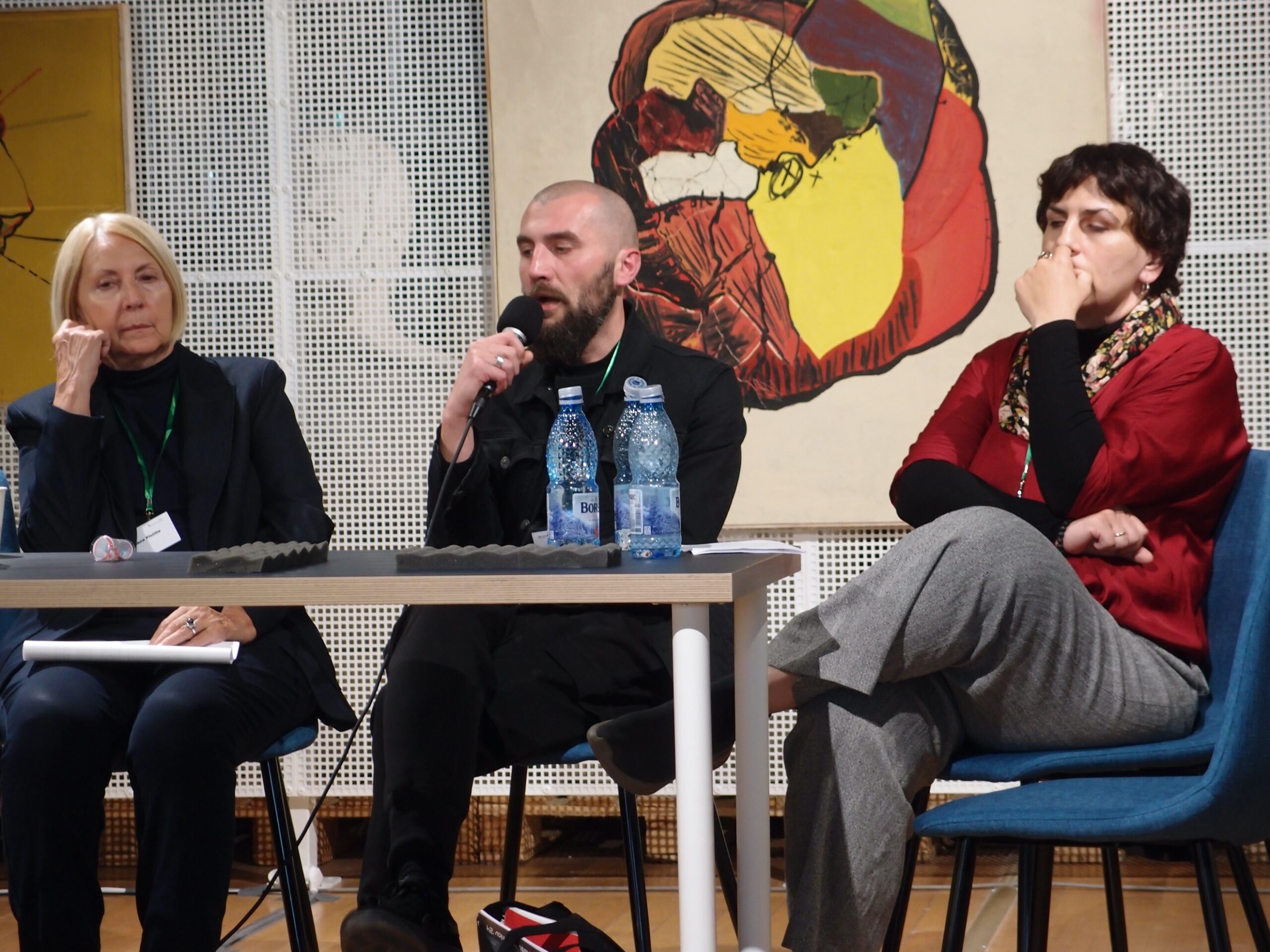
Ileana Pintilie received the AICA Distinguished Prize, Jurij Dobriakov, President AICA Lithuania and Kata Balázs-Miklós, President AICA Hungary. Round table at MNAC, Becoming Freedom. Performance Art in the ‘1990s
The Incentive Prize for Young Art Critics 2024 was awarded to German-Swedish Linnéa Bake (first prize). Texts by the first, second and third prize recipients are published on the AICA website. Jean Bundy, AICA USA, chairman of the Awards Committee, presented the jury’s choice of winners.
The General Assembly
Session 1 of the General Assembly was held in a hybrid format at the MNAC on 6 November and was devoted to information and discussion. The meeting was led by the newly-appointed AICA president, Małgorzata Kaźmierczak from Poland. Session 2, where decisions were made, was held online on 13 December after our return home.
AICA’s third Extraordinary Congress took place in 1973 in Kinshasa in what is now the Democratic Republic of Congo. The next congress will be in Johannesburg, South Africa, on 27–31 October 2025, thanks to a substantial financial contribution from UNESCO. After more than 50 years, the time has come for AICA to revisit Africa with a major project.
Exhibitions in Bucharest
The director of the MNAC, Călin Dan, guided us round the exhibitions at the Museum. The Twist. Failing Empires, Triumphant Provinces is an unconventional collection of archaeological artefacts, applied arts and apparel, and ethnographic and industrially mass-produced objects. Together, they generate meaningful dialogues with contemporary works of art. The Twist juxtaposes materials from five millennia of spiritual and material culture in a region roughly corresponding to the Romania of today.
The permanent exhibition Leviathan. In the Guts of the Collection at the MNAC invites the public to its labyrinthine museum storage, with an eclectic sculpture collection shown behind screens of transparent galvanised metal mesh.
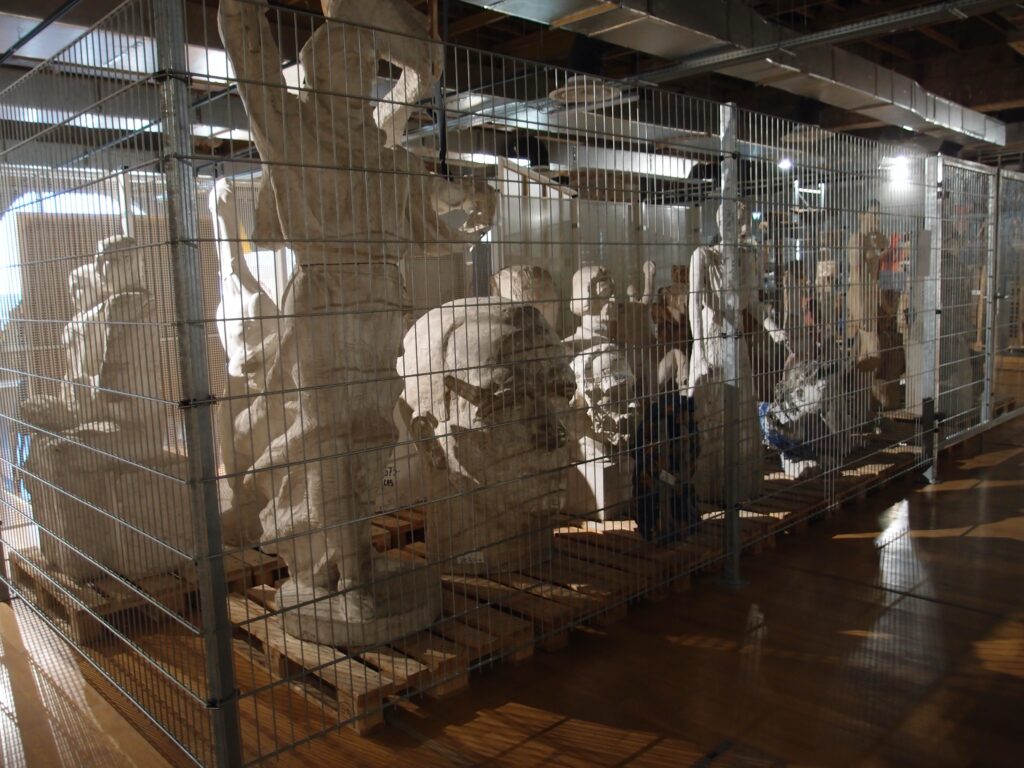
Exhibition view from Leviathan. In the Guts of the Collection at MNAC in Bucharest
In the exhibition Being Nina at the MNAC, Romanian Adina Mocanu (b. 1990) shows multi-channel video works reflecting the artist’s research into alternative universes, the extraterrestrial and The Other. The work is about Nina Kulagina, a housewife in the former Soviet Union, who became famous for her telekinetic abilities.
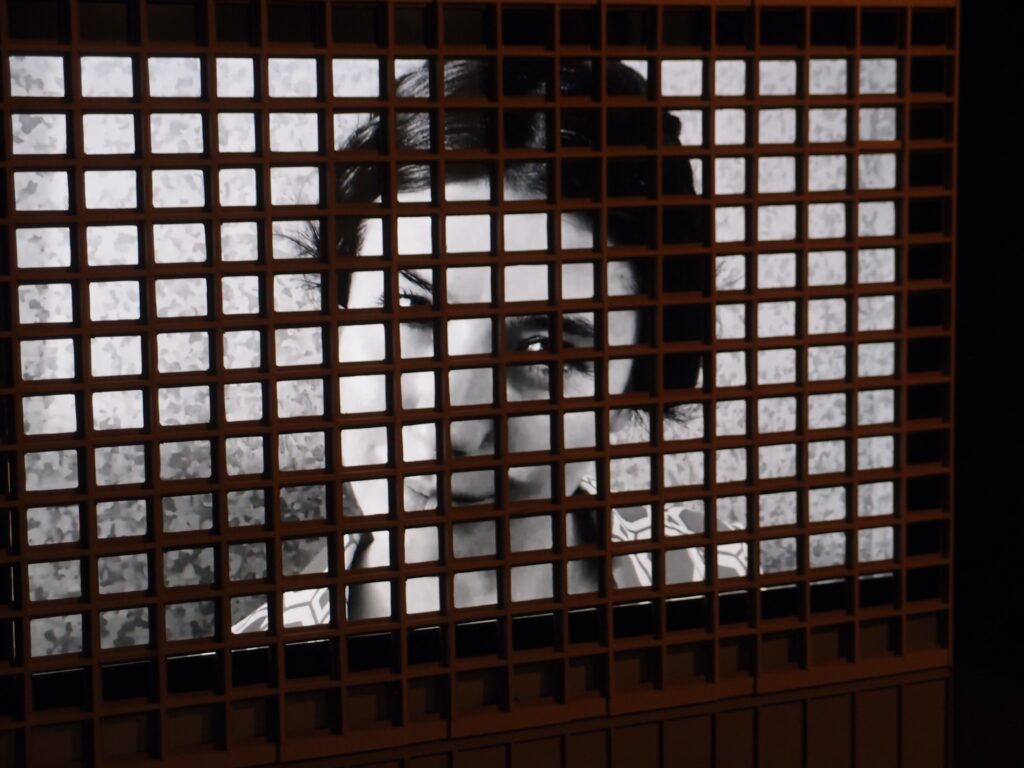
Adina Mocanu’s exhibition Being Nina at MNAC in Bucharest
We were also given a preview of the exhibition Dissonance at the National Museum of Art (MNAR), featuring 43 international artists born after 1972 and currently working in Germany, co-produced with Künstlerhaus Bethanien in Berlin. The participants also visited several art galleries together: Rezidența9, Galateca Gallery and CAV (Centre for Multimedia Visual Arts).
The second part of the Congress: Iaşi
The second part of the Congress was held in Iaşi in north-eastern Romania, near the border to Moldova. This is Romania’s second-largest city, with a population of 318,000 (2025). Iaşi was once the capital of the old principality of Moldavia, and later of Romania for a short period. The many grand public buildings reveal the city’s glorious past.
Paul O’Kane, artist, writer and senior lecturer in art and culture at Central Saint Martins, University of the Arts in London, was one of three keynote speakers. In Technologies of Romance, he claims that modernity developed faster than expected, quickly slipped out of control, encompassing a plethora and so many novelties that consequently became obsolete all too soon. Therefore, he argues that it is pointless to discuss whether artificial intelligence (AI) can or should grow beyond what we can master. The primary characteristic of all technologies must be to transcend ourselves and our control and constantly expand our abilities. The artist plays a special role in applying, experimenting and assisting us to adapt to new technology.
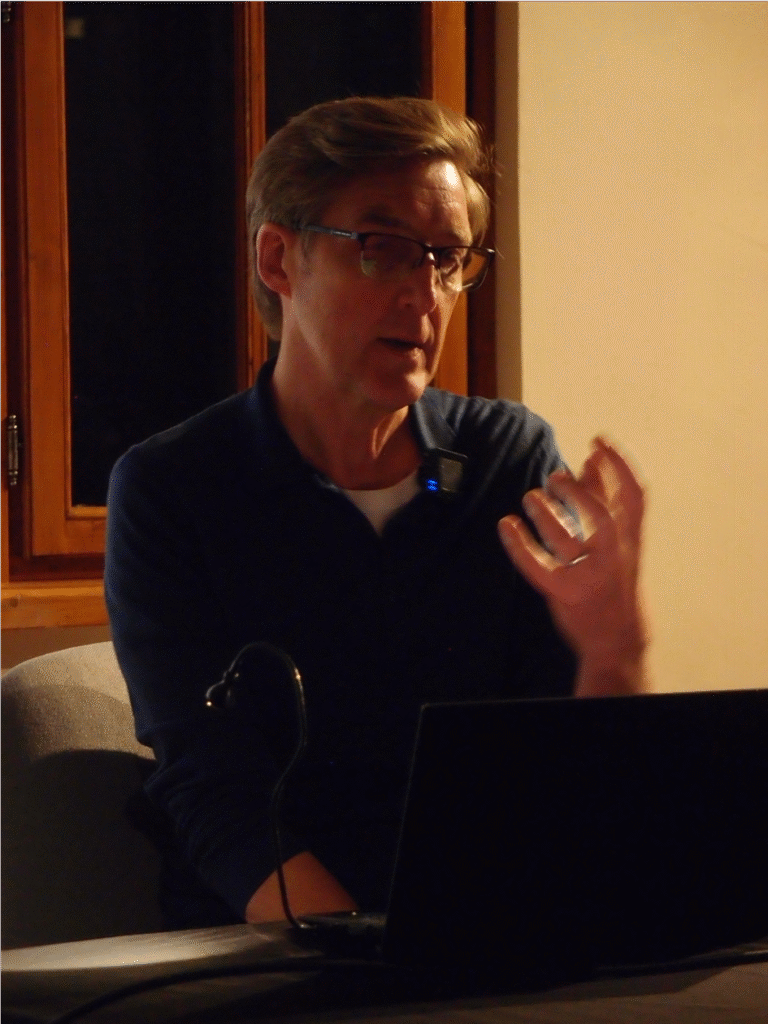
Paul O’Kane, key note speaker from London, lectures on Technologies of Romance at “George Enescu” National University of Arts in Iaşi.
Exhibitions in Iaşi
We visited the art museum at the Palace of Culture. This mighty neo-gothic building from 1906–1925 was formerly the Palace of Justice. It also houses the historical and ethnographic museums and the museum of science and technology.
Under the title of These are not drawings the Romanian artist Dumitru Gorzo (b. 1975) filled the walls of Borderline Art Space with hundreds of stencilled pictures of anthropomorphic beasts.
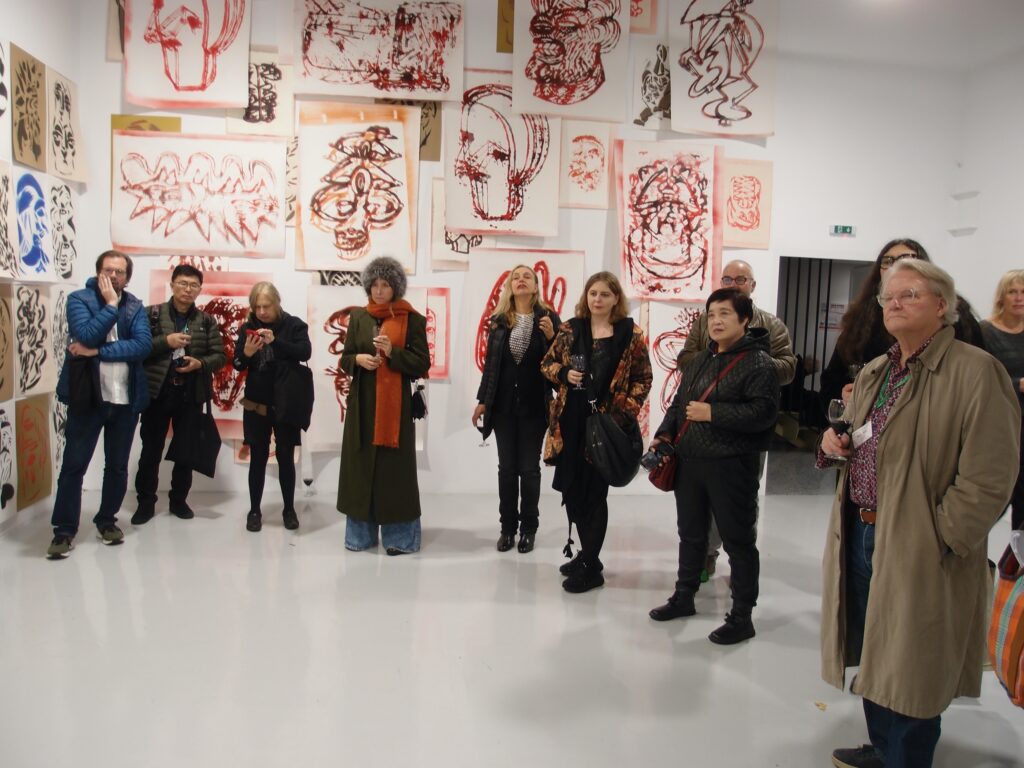
View from Dumitru Gorzo’s exhibition at Borderline Art Space in Iaşi These are not drawings. Kimmo Sarje, professor emeritus, AICA Finland, on the far right
At CIAC Baia Turcească, the Spanish artist Alonso Calero (ChatoZero) (b. 1969) presented his utopian project Limbo [Schengen], where borders will no longer be drawn according to political and economic circumstances but will be flexible structures adapted to demographics and climate.
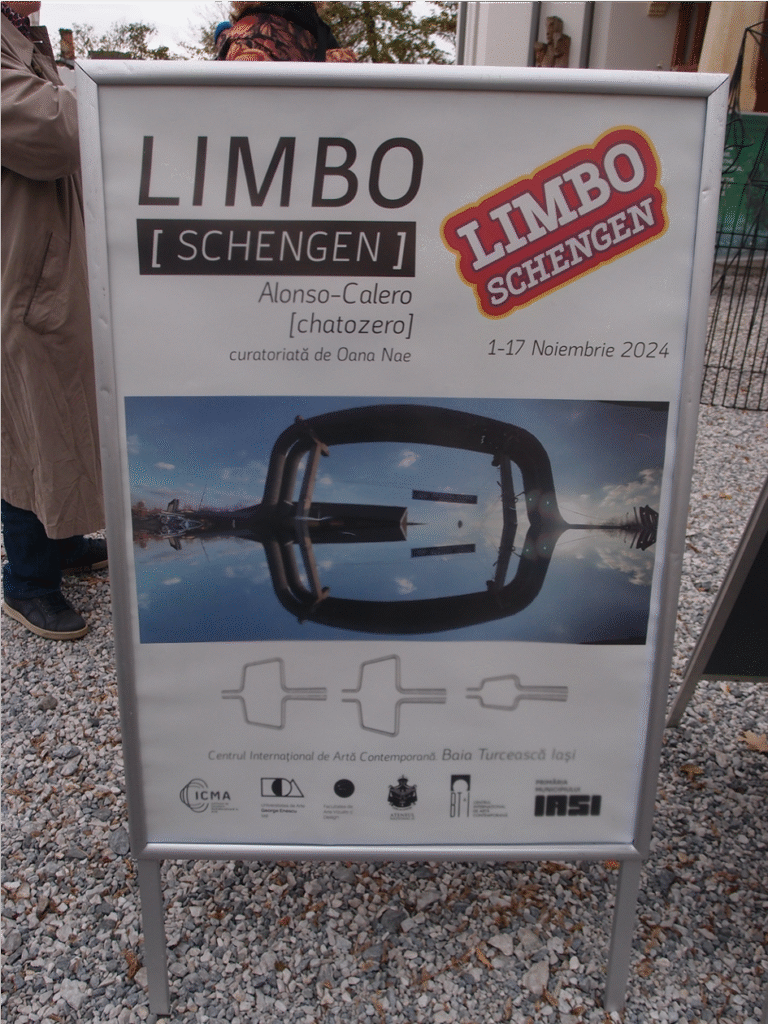
Poster for Alonso Calero’s (ChatoZero) exhibition Limbo [Schengen] at CIAC Baia Turcească in Iaşi
The exhibition Domestic at Artep Gallery featured several videos with narratives from Romania, Serbia and Croatia. The project highlights aspects of women’s lives that are often invisible in public, such as depression and anxiety.
Had the lectures, round-table discussions and Q&A sessions been uploaded as webinars, it would have been possible to listen to all speakers afterwards, and to refer back to the most engaging presentations. This would also have made interesting lectures available to many more than the circle of those present. This was not the case. The organisers have promised, however, to publish selected lectures in an edited version.
Christian Chambert AICA International Honorary Member
Translation by Gabriella Berggren
All photos: Christian Chambert
